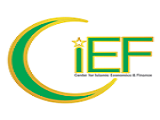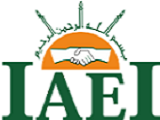The Debt-Equity Ratio Choice: Risk Sharing Instruments, A Viable Alternative
Abstract
Evidence has been documented in the literature that the interest based debt financing system is experiencing continuous discomfort. The outcome of the 2008 global financial crisis has further create fresh vigor to the assertion. Also, these authors have submitted that debt and leveraging are the two major causes of financial instability in the present system. This paper claims that the existence of the interest-based debt regime is becoming less acceptable, as excessive debt can affect the whole economic system, even in a developed country like United States. From an economic viewpoint, therefore, by banning interest rate-based contracts and decreeing exchange contracts, Islamic financeinspires risk sharing and prohibits risk transfer, risk shedding, and risk shifting. The paper proposes risk sharing based Islamic financing as a suitable alternative to the interest based debt financing. This study concludes that risk-sharing finance has several benefits, especially its potential to minimize, if not circumvent, the debt prompted financial crises that have beset the world.
.
Keywords : Debt-Equity Ratio; Risk Sharing Instruments; Islamic Finance
Keywords
Full Text:
PDFReferences
Askari, H, Iqbal, Z, Krichene, N. Mirakhor, A. (2012). “Risk Sharing in Finance: The Islamic Finance Alternative.” Singapore: John Wiley and Sons (Asia).
Bacha, O. I., (2017). Overcoming the debt dilemma with risk-sharing instruments.
In Islamic Commercial Law Report, 2017; an Annual Publication Assessing
the Key Issues and Global Trends in Islamic Capital Markets. (pp. 90-91).
Isra&Thomson Reuters.
Bacha, O. I., Mirakhor, A., & Askari, H. (2015). Risk sharing in corporate and public finance: the contribution of Islamic finance.
Baumol, W. J. (1965). Fordham University Press. In Myers, S. C. (2001). Capital structure. Journal of Economic Perspectives, 15(2), 81-102.
Berger, A. N., & Bonaccorsi di Patti, E. (2006). Capital structure and firm performance: A new approach to testing agency theory and an application to the banking industry. Journal of Banking and Finance, 30(4), 1065–1102.
Borges, A., Rodrigues, A., &Morgado, J. (2007). Contabilidade e finanças para a gestão, Lisboa, 3ºEdição: ÁreasEditora
Einaudi, L. (2006). First published as “Debiti”. In La ReformaSociale XLI. XLV (1). January 1934. “Debts”. In Selected Economic Essays, edited by L. Einaudi, 112– 123. Basingstoke, Hampshire: Palgrave Macmillan
Esperança, J., & Matias, F. (2005). FinançasEmpresariais, Lisboa, Dom Quixote
Fong, K. (2008, November 3). On safer ground. TheEdge Malaysia, 66-67.
Fong, K. (2009, March 9). Oil money keeping Gulf economies afloat. TheEdge Malaysia, 67.
Greenwald, B. C., & Stiglitz, J. E. (1986). Externalities in economies with imperfect information and incomplete markets. The quarterly journal of economics, 101(2), 229-264.
Hadlock, C. J., & James, C. M. (2002). Do banks provide financial slack? Journal of Finance, 57(3), 1383–1419
Harvey, J. T. (2014). Student loan debt crisis. . . Forbes Magazine.
Hellwig, M. (1998). “Banks, Markets, and Allocation on Risks in an Economy”. Journal of Institutional and Theoretical Economics (JITE), vol.154, no.1, pp.328‐345.
Jensen, M. C., &Meckling, W. H. (1976). Theory of the firm: Managerial behavior, agency costs and ownership structure. Journal of financial economics, 3(4), 305-360.
Keown, A. J. (2008). John D. Martin. J. William Petty and David F. Scott Jr. Financial Management: Principles and Applications, Edisi X. United Stated of America: Pearson Education.
Keown, A.J., Martin, J.D., Patty, J.W., & Scott, D.F. (2008). Financial Management: Principles and Application, 10th edition, Pearson Prentice Hall
Margaritis, D., &Psillaki, M. (2010). Capital structure, equity ownership and firm performance. Journal of banking & finance, 34(3), 621-632.
McMenamin,J. (1999), ‘‘Financial Management’’. Bath, the Bath Press.
Mirakhor, A. (2010). (2010). “Whither Islamic Finance? Risk Sharing in an Age of Crises”. Paper presented at the Inaugural Securities Commission Malaysia (SC) – Oxford Centre for Islamic Studies (OCIS) Roundtable. “Developing a Scientific Methodology on Shariah Governance for Positioning Islamic Finance Globally” March 15, 2010.
Mirakhor, A. (2012). Islamic finance, risk sharing and macroeconomic policies. Munich Personal RePEc Archive (MPRA), No. 47061.
Mirakhor, A. and I. S. Hamid (2009). “Islam and Development”. New York: Global Scholarly Publications.
Mirakhor, A., & Zaidi, I. (2007). Profit-and-loss sharing contracts in Islamic finance. Handbook of Islamic banking, 49, 25-37.
Modigliani, F., & Miller, M. H. (1958). The cost of capital, corporation finance and the theory of investment. The American economic review, 48(3), 261-297.
Modigliani, F., & Miller, M. H. (1963). Corporate income taxes and the cost of capital: a correction. The American economic review, 53(3), 433-443.
Myers, S. C. (1977). Determinants of corporate borrowing. Journal of financial economics, 5(2), 147-175.
Myers, S. C. (2001). Capital structure. Journal of Economic Perspectives, 15(2), 81- 102
Norita, M. N., & Shamsul-Nahar, A. (2004). Voluntary disclosure and corporate governance among financially distressed firms in Malaysia. FRRaG: Theelectronic journal of the Accounting Standards Interest Group of AFAANZ, 3(1). Retrieved November 15, 2018, from http://www.business.curtin.edu.
Othman, A., Sari, N. M., Alhabshi, S. O., &Mirakhor, A. (2017). Risk Transfer, Risk Sharing, and Islamic Finance. In Macroeconomic Policy and Islamic Finance in Malaysia (pp. 21-35). Palgrave Macmillan, New York.
Reinhart, C. and K. Rogoff (2009). “This Time Is Different: Eight Centuries of Financial Folly”. Princeton University Press.
Reinhart, C. M., & Rogoff, K. S. (2009). The aftermath of financial crises. American Economic Review, 99(2), 466-72.
Rogoff, K. S. (2011). Global imbalances without tears. Project Syndicate, 2011-3–1.
Ross, S. A., Westerfield, R. W., & Jaffe, J. (2002). Corporate Finance, 6 ‘“Edition.
Ross, S. A., Westerfield, R. W., & Jordan, B. D. (1999). Essentials of corporate finance. United States: Irwin McGraw-Hill
Ross, S. A., Westerfield, R., & Jordan, B. D. (1999). Finanseprzedsiębiorstw. Dom Wydawniczy ABC.
Stiglitz, J.E. (1989), Financial Markets and Development, Oxford Review of Economic Policy, vol. 5, no. 4.
Stone, M. R. (2000). The corporate sector dynamics of systematic financial crisis. IMF Working Paper. Retrieved April 20, 2009, from http://www.imf.org/external/pubs/ft / wp /2000 /wp00114.pdf.
Taleb, N. N., & Martin, G. A. (2012). How to prevent other financial crises. SAIS Review of International Affairs, 32(1), 49-60.
DOI: http://dx.doi.org/10.24042/febi.v3i2.3583
Refbacks
- There are currently no refbacks.
Copyright (c) 2019
Ikonomika : Jurnal Ekonomi dan Bisnis Islam is a Journal of Islamic Economics and Business, Published by the Faculty of Islamic Economics and Business at UIN Raden Intan Lampung Indonesia. This work is licensed under a Creative Commons Attribution-ShareAlike 4.0 International License.






11.png)


